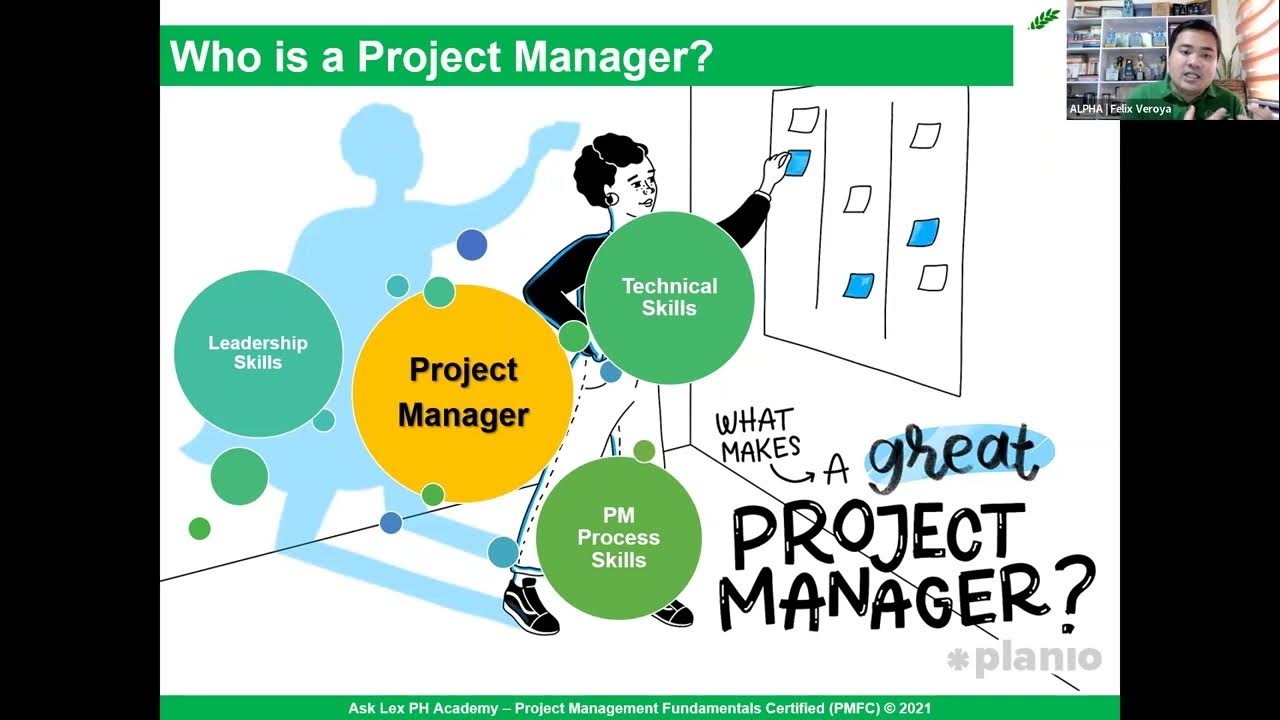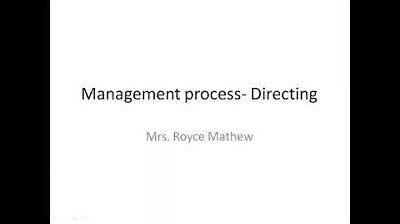PMP ECO Explanation - People
Summary
TLDRThe video script delves into conflict management and team leadership within a project management context. It discusses the importance of understanding conflict roots, utilizing resolution techniques, and establishing team charters and ground rules. The script also covers various leadership styles, team performance support, and the significance of training and knowledge transfer. It emphasizes the need for a proactive approach to identify and remove project impediments, ensuring smooth team collaboration and project progression.
Takeaways
- 📘 The script discusses conflict management and team leadership within the domain of 'People' in project management.
- 🔍 It emphasizes the importance of understanding the root cause of conflicts, which can arise from competition, differences in expectations, and communication issues.
- 📊 The speaker outlines different stages of conflict, from level one (identification of differences) to level five (a situation akin to 'war'), each requiring different resolution techniques.
- 🛠️ Conflict resolution techniques include using the team charter, ground rules, and various strategies such as smooth withdrawal, compromise, and forcing.
- 👥 The role of a project manager in creating and updating the team charter and ground rules is crucial for setting expectations and managing conflicts.
- 🌟 Leadership styles discussed include directive, consultative, servant leadership, consensus, and situational, with the project manager needing to adapt styles based on the team and stakeholders.
- 📈 The script highlights the importance of setting clear vision and strategy, choosing the right leadership style, and supporting team performance through KPIs and feedback.
- 💡 The Bruce Tuckman model (Forming, Storming, Norming, Performing) is mentioned as a framework to understand team development stages and address challenges at each stage.
- 🏆 Recognition and growth of team members are important, with the project manager facilitating an environment where team members feel safe to make mistakes and learn.
- 🛑 The need to address and remove impediments, such as blockers or obstacles, is crucial for the smooth running of the project, with the project manager proactively identifying and resolving these issues.
- 📚 Training and continuous skill development for team members and stakeholders are essential, with the project manager ensuring that all parties are adequately trained and updated on project methodologies.
Q & A
What was the main topic discussed yesterday in the context of the business environment?
-The main topic discussed yesterday was the Electronic Control Unit (ECU) in the context of the business environment domain.
What are the two key components discussed in relation to managing conflict in a project?
-The two key components discussed were understanding the reason behind the conflict and analyzing the stages of conflict, which are level one through level five.
What are some common causes of conflict in a project?
-Common causes of conflict include competition, differences in expectations, disagreements about rules, communication issues leading to stakeholder disengagement, and lack of awareness of decisions made without stakeholders' approval or notice.
How can the team charter and ground rules help in resolving conflicts?
-The team charter and ground rules can help by establishing a clear framework for working hours, decision-making processes, conflict resolution strategies, and communication guidelines, which can prevent and address conflicts effectively.
What are the different levels of conflict and their characteristics?
-Level one is problem identification with shared disagreements but a controlled environment. Level two is agreement where distrust and personal issues arise. Level three is contest, where groups form and solutions become less available. Level four is crusade, characterized by attempts to harm rather than work for the project. Level five is war, where direct conflict and destruction are present.
What leadership styles were mentioned in the script, and how do they differ?
-The leadership styles mentioned include hands-off, cross-sectional, servant leadership, transactional, inspirational, and transformational. They differ in their approach to decision-making, team facilitation, and empowerment of team members.
How can a project manager ensure a diversified team?
-A project manager can ensure a diversified team by considering gender, culture, and nationality when acquiring resources, allowing for a variety of perspectives and skills.
What is the importance of setting a clear vision for a team in terms of project management?
-Setting a clear vision helps establish the project's direction, expected behaviors, working hours, and decision-making processes, providing a foundation for team members to work towards common goals.
What is the Bruce Tuckman model, and how does it relate to team development?
-The Bruce Tuckman model, also known as the forming-storming-norming-performing model, outlines the stages a team goes through as it develops, from initial formation to high performance, with stages of potential conflict and adjustment in between.
How can a project manager support team performance and development?
-A project manager can support team performance and development by setting clear KPIs, recognizing member growth, providing appropriate feedback, and using models like the Bruce Tuckman model to understand and facilitate team development stages.
What strategies can be used to empower team members and stakeholders in a project?
-Strategies to empower team members and stakeholders include delegation of authority, using decision-making techniques like the Fist of Five, and providing training and education to ensure they are equipped to contribute effectively to the project.
Outlines

Cette section est réservée aux utilisateurs payants. Améliorez votre compte pour accéder à cette section.
Améliorer maintenantMindmap

Cette section est réservée aux utilisateurs payants. Améliorez votre compte pour accéder à cette section.
Améliorer maintenantKeywords

Cette section est réservée aux utilisateurs payants. Améliorez votre compte pour accéder à cette section.
Améliorer maintenantHighlights

Cette section est réservée aux utilisateurs payants. Améliorez votre compte pour accéder à cette section.
Améliorer maintenantTranscripts

Cette section est réservée aux utilisateurs payants. Améliorez votre compte pour accéder à cette section.
Améliorer maintenant5.0 / 5 (0 votes)






